Cjarsons ravioli from Friuli Venezia Giulia.
Cjarsons, also called cjalzons or cjalsonos, are an ancient traditional filled pasta from Friuli, particularly the Alpine region of Carnia. However, they are made in many parts of Friuli, both in the mountains and on the plains.
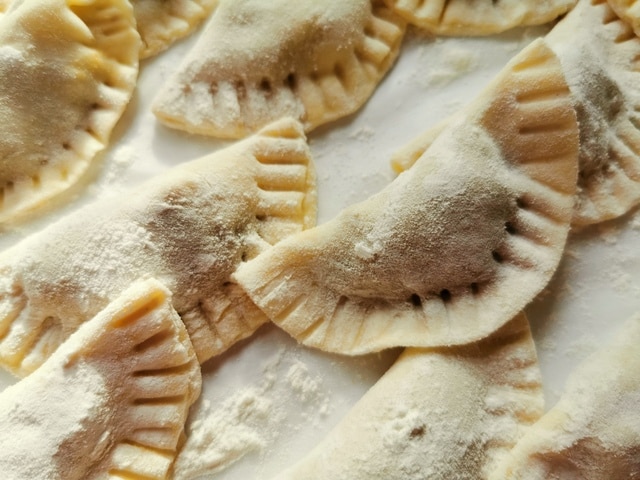
Although of poor and peasant origin, this pasta has truly unique and complex flavors. In fact, the main characteristic of most cjarsons is that they are filled with a mixture of sweet and savoury ingredients. So they are really in a class of their own in the world of Italian pasta!
Cjarsons come in different shapes.
The shape of cjarsons is very similar to agnolotti, or half-moon ravioli. However, you can find them in different shapes; round, half-moon, boat shaped or like an Italian carabinieri’s hat. The size may vary as well.
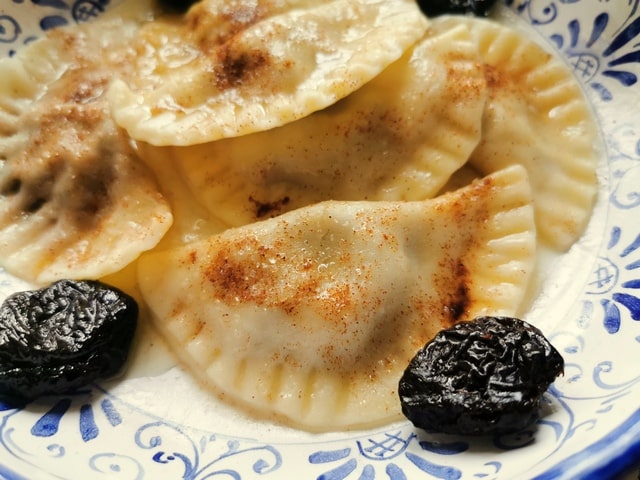
The dough can be different too.
On the plains, ravioli from Friuli sometimes contain meat but in the mountains normally not. Traditionally, instead of using egg pasta, they are prepared with water and flour. But, you can also find them made with a potato and flour dough, similar to potato gnocchi dough. However, nowadays, some cjarsons dough recipes do include eggs.
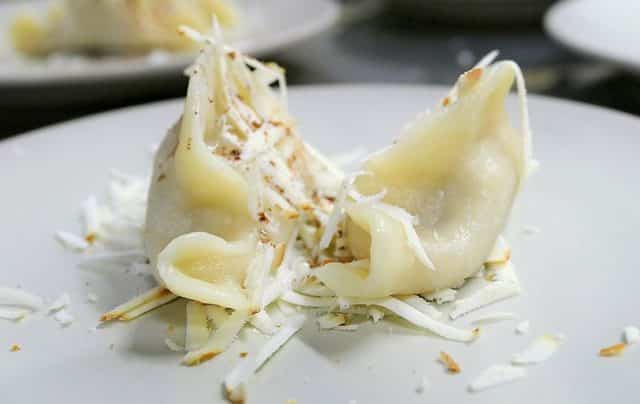
There are countless types of fillings.
The filling, as often happens in regional cuisine, has countless variations. In fact, it can vary from valley to valley or even from house to house. The simplest have a filling of potatoes, cinnamon and raisins and others spinach and smoked ricotta. However, most of these ravioli from Friuli contain combinations of sweet and savory ingredients which can include chocolate, cinnamon, raisins, figs, prunes, jam, pine nuts, biscuits, rum, grappa, chives, parsley, herbs, mint or parsley!
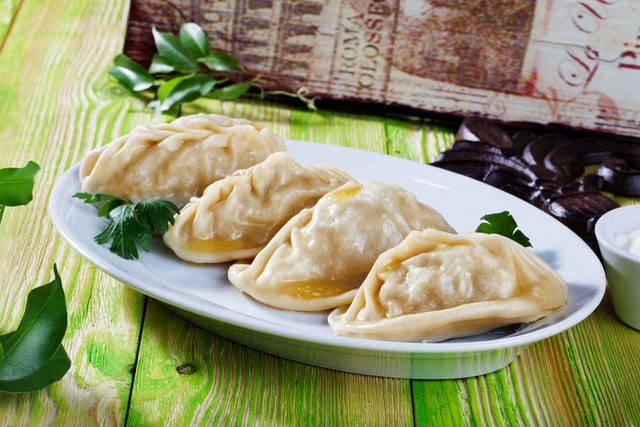
Out of necessity, Friuli housewives have used cjarsons for centuries as a way to use up pantry leftovers. Italians say ‘svuota-dispensa’ (a pantry emptier!). They usually serve them with melted butter and a sprinkling of smoked ricotta.
Traditionally the butter was a clarified butter called l’ont (ghee) which Friulian women prepared by foaming butter. This made it easier to conserve the butter in the summer months. I have also read that some used to prepare cjarsons on the last Thursday of January, as a symbol of good luck for the future harvest.
A little cjarsons legend and history.
A popular Carnic legend (or fairytale?) tells that there was a goblin called Guriùt, who was caught red-handed while stealing the cream from some fresh milk. As a way of asking forgiveness he gave the mistress of the house the recipe for cjarsons!
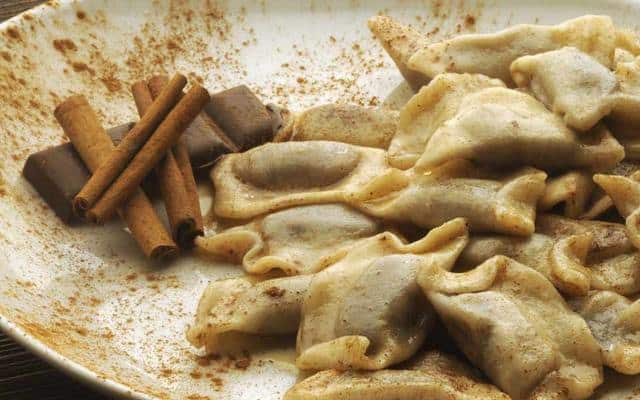
However, the origin of this ravioli from Friuli is believed to be historically linked to the cramârs, spice traders who crossed the mountains on foot to sell spices from Venice in Austria, Germany and Hungary. When they came back home after months away, they emptied the drawers of their portable spice box (called a crame or crassigne) and their wives used the spices that remained as ingredients for cjarsons, to celebrate their safe return.
Cjarsons festivals in Carnia.
To taste the real Friulian cjarsons the best is to go to one of the many festivals organized annually in the municipalities of Carnia. In early June, there’s a cjarsons festival in Sutrio, in the Udine province, not far from the border with Austria. There you can taste ten different types of Cjarsons from ten Carnia mountain villages.( On my to do list!)
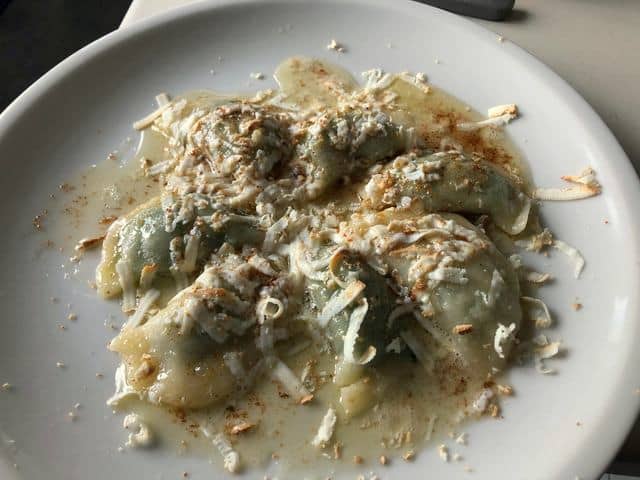
Cjarsons you can try at the Sutrio festival.
Among the Cjarsons you can try at the Sutrio cjarsons festival are..
Cjarsons di Cabia, filled with ricotta, cherry and apricot jam, grappa, vermouth, lemon peel, chocolate, cinnamon, bitter cocoa, dry biscuits and parsley. These elaborate ravioli were wedding sweets. They were considered so precious that people stored them in small lockers carried on the shoulders. Even today, all the families of the village prepare them on the Feast of the Immaculate Conception (8th December).
Cjarsons di Piedim were also wedding treats. The current recipe has been verbally passed down from family to family. They make the dough with potatoes (like gnocchi) and the filling is sweet: plum jam, dried figs, raisins, walnuts and hazelnuts, dark chocolate, lemon, dry biscuits, schnapps, sugar and cocoa.
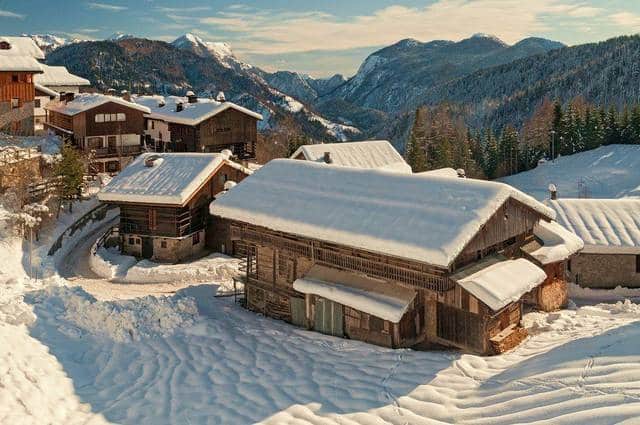
Cjarsons di Ravascletto have a filling of fresh ricotta, parsley, cocoa, raisins, biscuits, cinnamon, breadcrumbs, rum and aromatic herbs. Whereas cjarsons of Ligosullo contain potatoes, parsley, mint, lemon balm, cinnamon, onion and sugar.
And there are more … some made with a potato dough and others not, some extremely rich and others simpler. The above mentioned types of sweet ravioli can also be tasted at the individual village feasts.
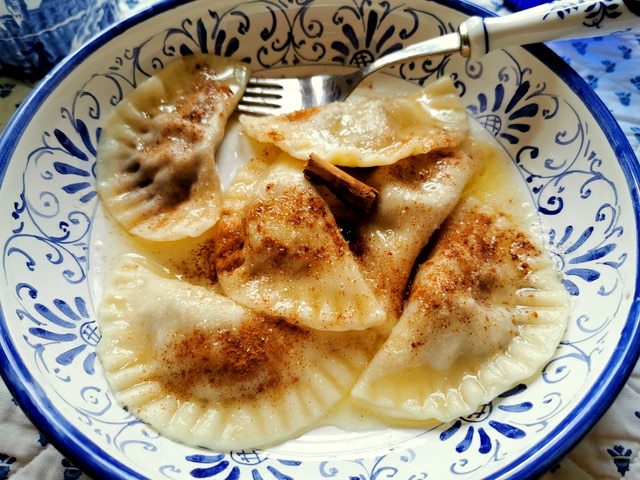
Prune & fig cjarsons di Pontebba
The first recipe for cjarsons that I have published here on The Pasta Project are those from Pontebba, a small town about an hour’s drive from Sutrio. These cjarsons are simpler than some of the ones I have just described. They’re made with a filling of ricotta, dried prunes and figs and sugar and served with melted butter and cinnamon. Check out the recipe here.
Even though these sweet ravioli are simpler than many types of cjarsons, they are absolutely divine. I think the fact that they are simpler makes them easier to make at home. I highly recommend giving them a try!
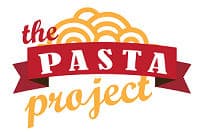

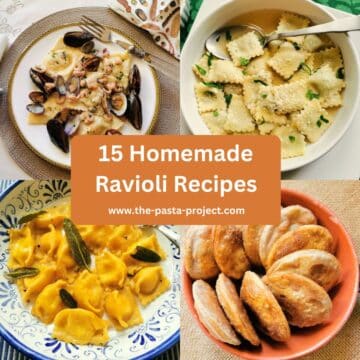
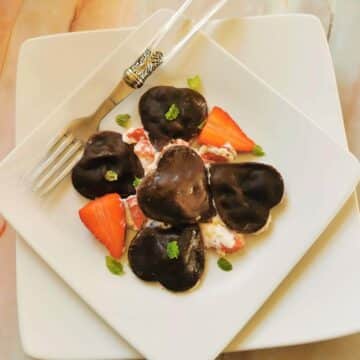
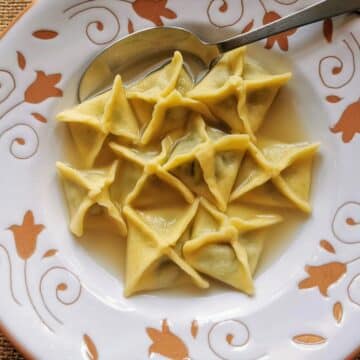
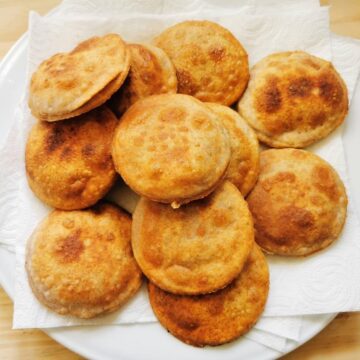
Katerina says
This is so fascinating! All the different fillings sound scrumptious but I would LOVE to try those wedding sweets - they sound incredible!
The Pasta Project says
Thank you, Katerina. They are all delicious!